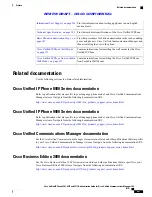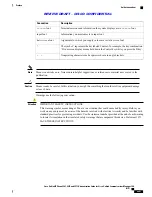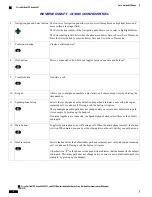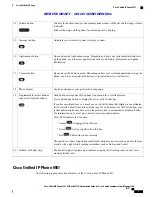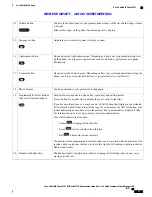
C H A P T E R
1
Cisco Unified IP Phone
The Cisco Unified IP Phone 8961, 9951, and 9971 provides voice communication over an Internet Protocol
(IP) network. The Cisco Unified IP Phone functions much like a digital business phone, allowing you to
place and receive phone calls and to access features such as mute, hold, transfer, speed dial, call forward,
and more. In addition, because the phone connects to your data network, it offers enhanced IP telephony
features, including access to network information and services, and customizeable features and services.
The Cisco Unified IP Phones have the following features:
•
24-bit color phone screen (Cisco Unified IP Phone 9971 has touchscreen support)
•
Programmable feature buttons that support up to 5 lines (6 lines for the Cisco Unified IP Phone 9971)
or that can be programmed for other features
•
Full video capabilities (Cisco Unified IP Phones 9951 and 9971 only)
•
Gigabit ethernet connectivity
•
Support for an external microphone and speakers
•
Bluetooth support for wireless headsets (Cisco Unified IP Phones 9951 and 9971 only)
•
Network connectivity by Wi-Fi (Cisco Unified IP Phone 9971 only)
•
USB ports:
◦
two USB ports for Cisco Unified IP Phones 9951 and 9971
◦
one USB port for Cisco Unified IP Phone 8961
A Cisco Unified IP Phone, like other network devices, must be configured and managed. These phones
encode G.711 a-law, G.711 mu-law, G.722, G.729a, G.729ab, iLBC, and iSAC codecs, and decode G.711
a-law, G.711 mu-law, G.722, G.729, G.729a, G.729b, G.729ab, iLBC, and iSAC codecs.
Using a cell, mobile, or GSM phone, or two-way radio in close proximity to a Cisco Unified IP Phone
might cause interference. For more information, see the manufacturer
’
s documentation of the interfering
device.
Caution
This chapter includes the following topics:
•
Cisco Unified IP Phone 8961, 9951, and 9971, page 2
Cisco Unified IP Phone 8961, 9951, and 9971 Administration Guide for Cisco Unified Communications Manager 10.0
(SIP)
1











